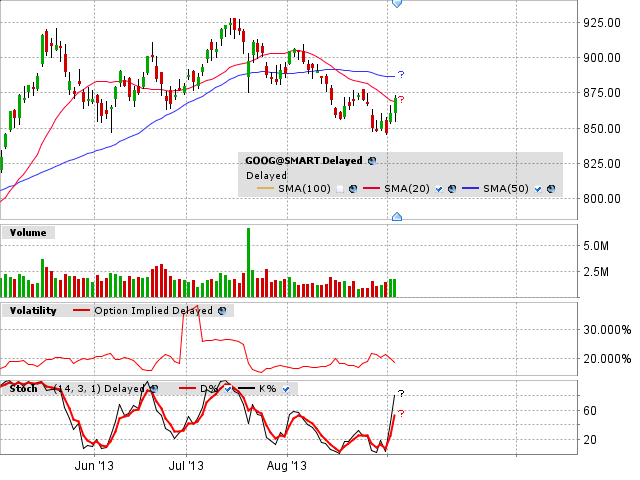Google (Code GOOG) is a technology company. That builds products and provides services to organize information and make it universally accessible and useful. It provides Search, Product Listing Ads, Search plus Your World, Google Now, and Google Knowledge Graph. The company also offers AdWords, AdSense, Google Display, DoubleClick Ad Exchange, and YouTube. In addition, it provides Google Mobile, Google Local, Android, Google Chrome OS, Google Chrome, Google+, Google Play, Google Drive, and Google Wallet. Further, the company offers Google TV, Google Apps, Search Appliance, Google Site Search, Google Commerce Search, Google Maps Application Programming Interface, and Google Earth Enterprise.
[jw_player file=”http://6555c5ff41a20cf4fba0-908650a199e3b7e94010dc2ac7911a50.r92.cf1.rackcdn.com/GOOG_310713.mp4″ image=”http://68ae6e408499dfc2c6e1-40cecf3cbedb61f0342f8d4c5cb58fad.r33.cf1.rackcdn.com/GOOG 310713.png” height=”330″ width=”590″ autoplay=”false”]
Click Here To Receive Free Trade Recommendations
On the 31st July, we entered into a Call Diagonal Spread on GOOG. This strategy is a neutral to bullish view for the underlying stock, where we buy a longer dated Call option. And sell a higher strike, shorter-dated Call option.
The position we entered was to Buy the Dec 800 Call option. And Sell the Sept 930 Call option (using the Mini options = 10 shares per option contract). Our view for Google was that it had the potential to reach $930 by the end of September. If the share price were to retrace and break its trend, however, buying the deep In The Money (ITM) Dec 800 calls would offer us the ability to exit without losing too much value in the position.

We paid $99.80 per share to enter the position. As time progressed, GOOG trended sideways. Our shorter dated sold call decreased in value and we were able to buy it back at a cheaper price, paying $1.00 per share on the 5th September. This equates to a gross $9.20 per share profit from the sold call option.
[jw_player file=”http://6555c5ff41a20cf4fba0-908650a199e3b7e94010dc2ac7911a50.r92.cf1.rackcdn.com/GOOG_111013.mp4″ image=”http://68ae6e408499dfc2c6e1-40cecf3cbedb61f0342f8d4c5cb58fad.r33.cf1.rackcdn.com/GOOG 111013.png” height=”330″ width=”590″ autoplay=”false”]
Click Here To Receive Free Trade Recommendations
Following this, on the 11th October, we sold November 910 mini Call options. And received a further $11.80 per share. Our net cost for the trade was now at $89.00 per share.
Having released their earnings announcement, the price of GOOG jumped up, breaking the sideways trading range and breaching $1,000 for the first time in the history of the company’s listing. We saw this as an opportunity to exit our trade, beating any Time Decay for our Dec 800 Calls. The position was closed on the 21st October.
[jw_player file=”http://6555c5ff41a20cf4fba0-908650a199e3b7e94010dc2ac7911a50.r92.cf1.rackcdn.com/GOOG_211013.mp4″ image=”http://68ae6e408499dfc2c6e1-40cecf3cbedb61f0342f8d4c5cb58fad.r33.cf1.rackcdn.com/GOOG 211013.png” height=”330″ width=”590″ autoplay=”false”]
Click Here To Receive Free Trade Recommendations
Our closed position resulted in a 20.9% return for less than 3 months investment time. During that period, the share price gained 13.2%. But would have required you paying approximately $892 per share to enter the trade.
In summary, our view for the position was correct = Neutral to Bullish; and we were able to capitalize on Time Decay in both sold legs of the trade.